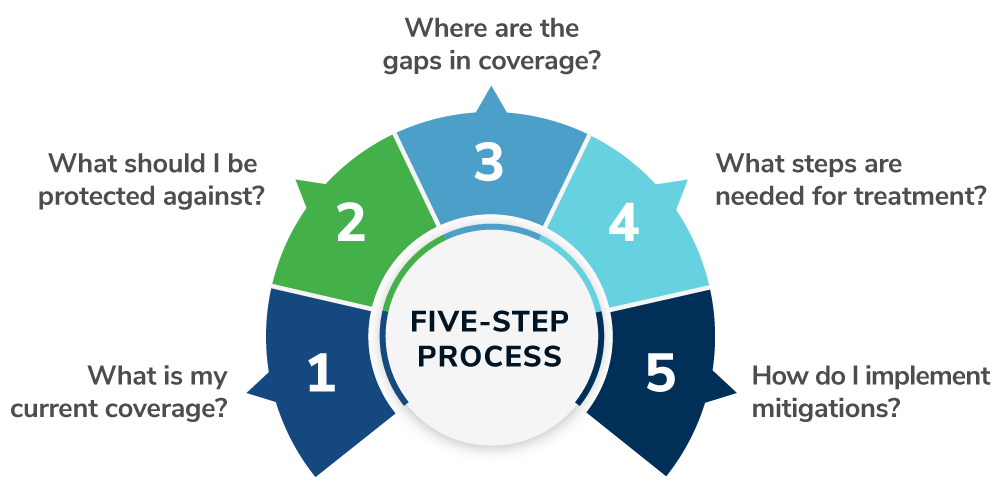The techniques marked in red in the graph above are those that are not currently covered, which might be important for your organization to protect against. If you are using the tool, you should be able to see a similar view in the Step3-ATT&CK-GapinCoverage sheet of the workbook.
Step 4: What Steps Are Needed for Treatment?
Now that you have identified the gap in your coverage, the next step is to identify how they will be added to your coverage. You can choose to take one of the three actions for the TTPs that you have identified for coverage:
- Create a new detection
- Invest in technology
- Risk accepted
Create a new detection: Creating a new detection can, in many cases, offers a simple, yet effective solution for organizations. However, new detections can often create a false-positive alerts, so be mindful about tuning them to ensure that you can still detect malicious behavior without overwhelming your team with false-positive detections or “noise”.
If you have an MDR provider, work with the provider to understand the effectiveness of covering the TTPs via custom detection rules. For example, as a part of our Kroll Responder MDR service, our dedicated Detection Engineering team supports the creation of bespoke detections for our clients. We also provide them with a technical account manager to support them in maturing their MDR coverage over time. We work with our clients to continuously improve their coverage for threat detection via either bespoke detection or recommendations on improvements.
MITRE D3fend can help to identify appropriate detection and mitigation methods. Search the technique name in the D3fend database to gain a view of available options for detection. Pivot into the detection logic and other valuable insights from there.
Invest in Technology: More specifically, investing in technology to provide this mitigation. In such cases, look at the overall coverage offered by this tool (defense in depth). From the identified TTPs, there may be some that can be mitigated by implementing a new technology but the cost of implementing the tool may be high. Think of these TTPs as part of the attack chain instead of them being standalone to understand if the additional investment is worth it. Alternatively, you could also undertake a red team exercise to determine the likelihood of occurrence based on the security controls you have and to identify new TTPs that you may not have considered.
Risk Accepted: Risk acceptance is where you accept the risks posed to the organization by not covering the TTPs that are identified. Sometimes the cost of implementing a detection or new technology outweighs the value this mitigation step provides to the organization. In these types of scenarios, weigh up your options for risk mitigation.
Step 5: How Do I Implement Mitigations?
In this step, you will implement one of the treatment plans outlined above. Once the mitigation is in place, update your ATT&CK coverage to reflect the latest enhancements (let’s say you implemented two controls to cover three additional TTPs). Create a renewed ATT&CK MAP to visualize the impact of implementing additional TTPs, then document the changes and repeat the process again. If you are following the free template we provided, the ATT&CK-Renewed coverage tab will provide this view. If you are using the tool, you should be able to see a similar view in the Step5-ATT&CK-RenewedCoverage sheet of the workbook.








